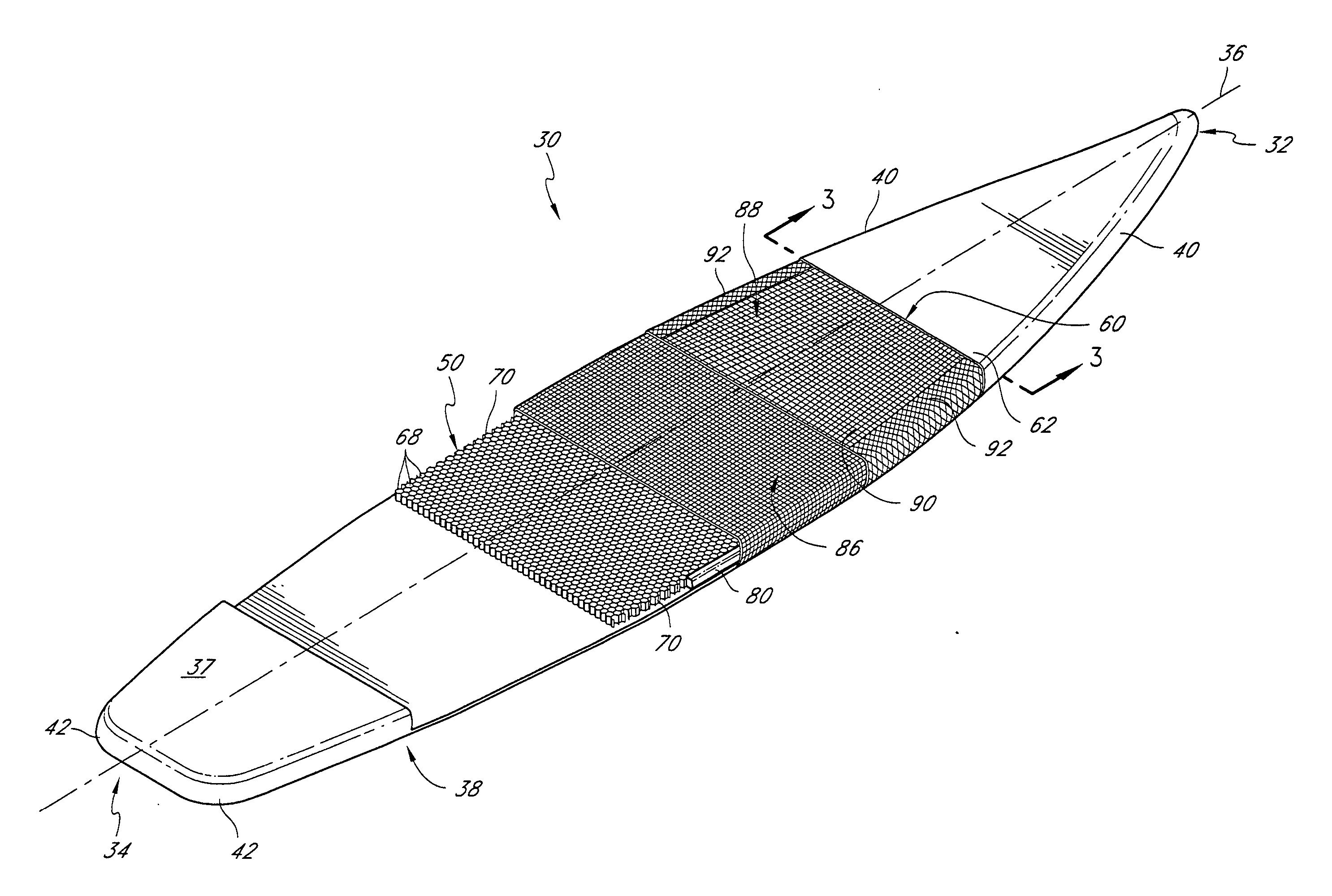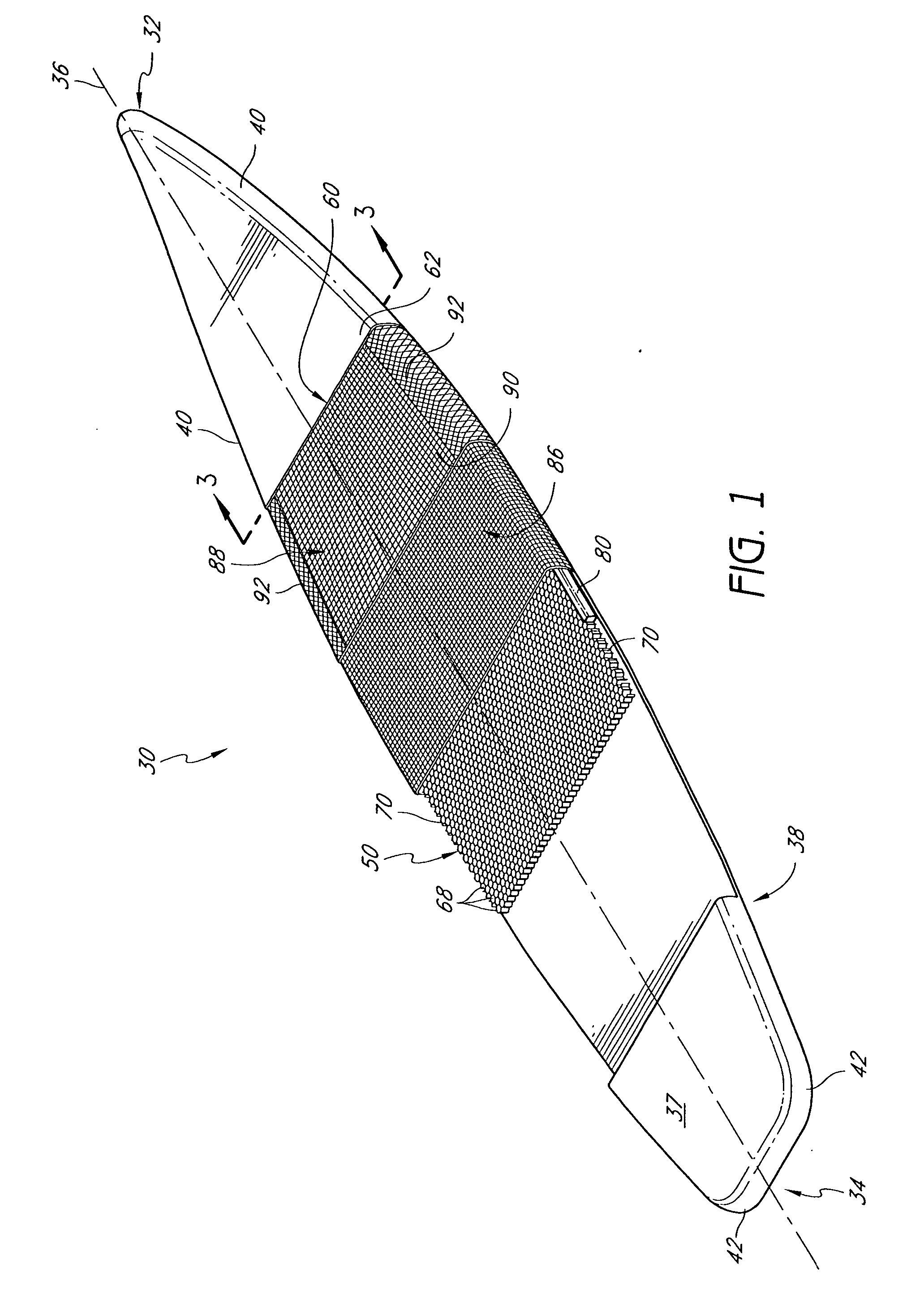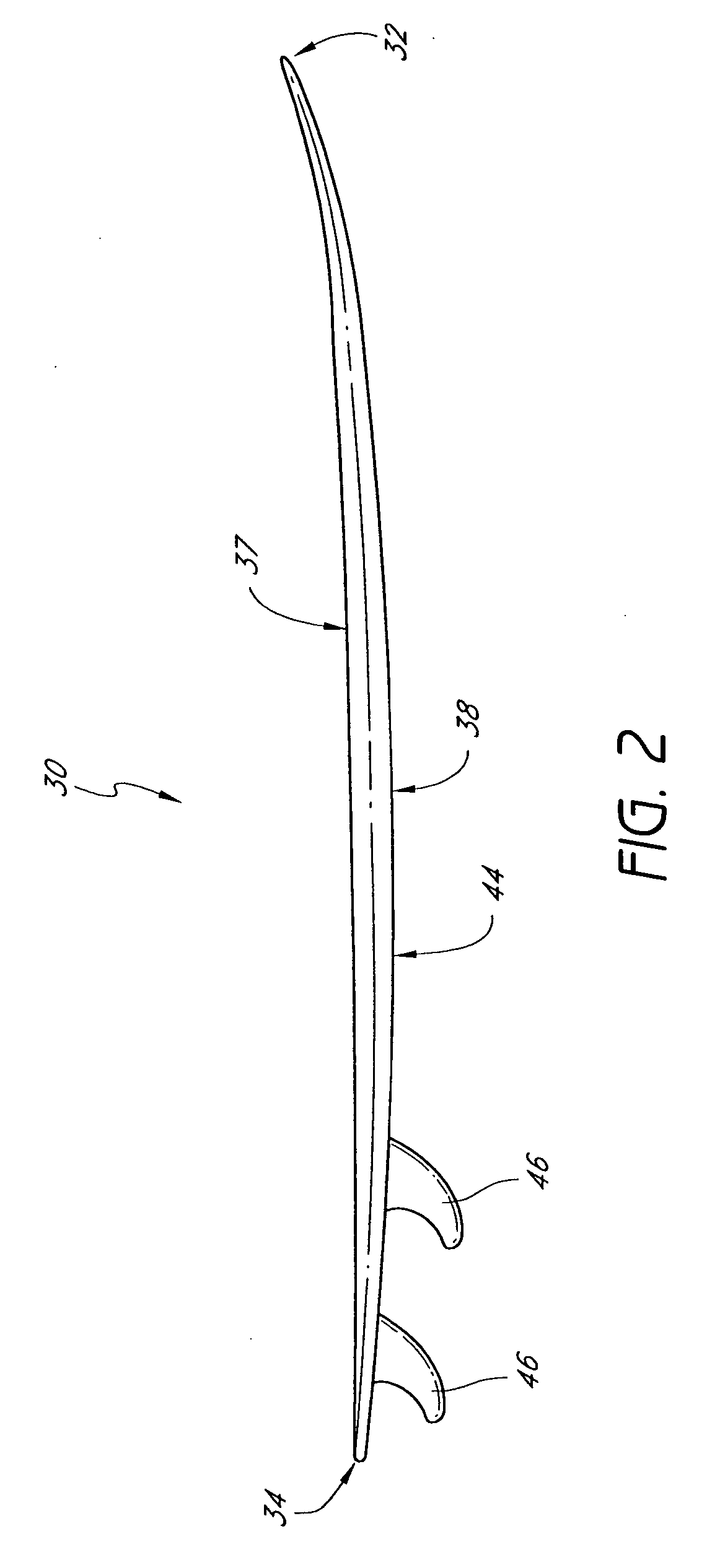Surfboard having a honeycomb core
a technology of surfboard and honeycomb core, which is applied in the field of surfboards having honeycomb core materials, can solve the problems of reducing the buoyancy of the surfboard, weak and brittle surfboard, and easy breakage of traditional polyurethane foam/fiberglass surfboards, and achieves the effect of maintaining flexibility characteristics and being strong and ligh
- Summary
- Abstract
- Description
- Claims
- Application Information
AI Technical Summary
Benefits of technology
Problems solved by technology
Method used
Image
Examples
Embodiment Construction
[0035] With initial reference to FIGS. 1-3, an embodiment of a surfboard 30 that incorporates features and aspects of Applicant's invention is illustrated. As illustrated, the surfboard 30 preferably is elongate, and has a nose or tip 32 at a first end and a tail 34 at a second end. A longitudinal axis 36 of the surfboard 30 extends from the tail 34 to the nose 32. An upper side or deck 37 of the surfboard 30 is configured to support the weight of a rider. A bottom side or hull 38 of the surfboard 30 is configured to engage a surface of the body of water upon which the surfboard 30 is ridden.
[0036] Opposing edges or rails 40 of the board 30 make up a transition between the deck 37 and bottom 38 of the board and extend from the nose 32 to the tail 34. The width of the board 30 between the opposing rails 40 changes along its length. As illustrated, the width of the surfboard 30 preferably is the least at the nose 32 of the board and increases gradually along the length of the board t...
PUM
| Property | Measurement | Unit |
|---|---|---|
| thickness | aaaaa | aaaaa |
| compressive strength | aaaaa | aaaaa |
| compressive strength | aaaaa | aaaaa |
Abstract
Description
Claims
Application Information
 Login to View More
Login to View More - R&D
- Intellectual Property
- Life Sciences
- Materials
- Tech Scout
- Unparalleled Data Quality
- Higher Quality Content
- 60% Fewer Hallucinations
Browse by: Latest US Patents, China's latest patents, Technical Efficacy Thesaurus, Application Domain, Technology Topic, Popular Technical Reports.
© 2025 PatSnap. All rights reserved.Legal|Privacy policy|Modern Slavery Act Transparency Statement|Sitemap|About US| Contact US: help@patsnap.com



